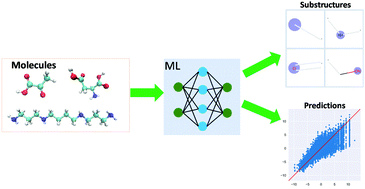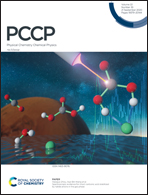A machine-learning-assisted study of the permeability of small drug-like molecules across lipid membranes
Abstract
Study of the permeability of small organic molecules across lipid membranes plays a significant role in designing potential drugs in the field of drug discovery. Approaches to design promising drug molecules have gone through many stages, from experiment-based trail-and-error approaches, to the well-established avenue of the quantitative structure–activity relationship, and currently to the stage guided by machine learning (ML) and artificial intelligence techniques. In this work, we present a study of the permeability of small drug-like molecules across lipid membranes by two types of ML models, namely the least absolute shrinkage and selection operator (LASSO) and deep neural network (DNN) models. Molecular descriptors and fingerprints are used for featurization of organic molecules. Using molecular descriptors, the LASSO model uncovers that the electro-topological, electrostatic, polarizability, and hydrophobicity/hydrophilicity properties are the most important physical properties to determine the membrane permeability of small drug-like molecules. Additionally, with molecular fingerprints, the LASSO model suggests that certain chemical substructures can significantly affect the permeability of organic molecules, which closely connects to the identified main physical properties. Moreover, the DNN model using molecular fingerprints can help develop a more accurate mapping between molecular structures and their membrane permeability than LASSO models. Our results provide deep understanding of drug–membrane interactions and useful guidance for the inverse molecular design of drug-like molecules. Last but not least, while the current focus is on the permeability of drug-like molecules, the methodology of this work is general and can be applied for other complex physical chemistry problems to gain molecular insights.

- This article is part of the themed collection: Emerging AI Approaches in Physical Chemistry


 Please wait while we load your content...
Please wait while we load your content...